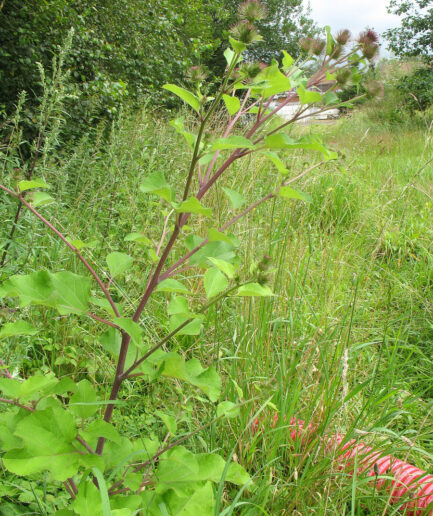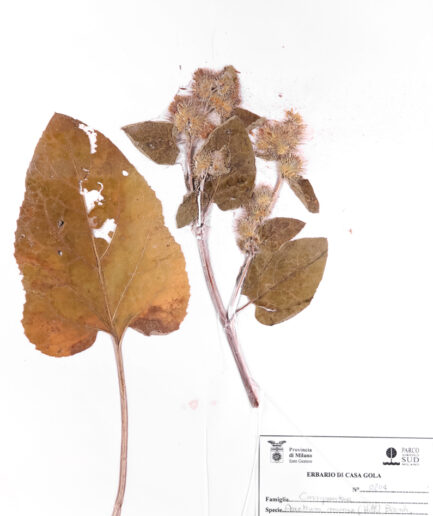Chickweed
Scientific name: Stellaria media (L.) Vill.
Family: Caryophyllaceae
MORPHOLOGY
Growth habit and size: Annual or biennial plant, highly variable in hairiness, leaf shape, and internode length, resulting in many varieties and subspecies found in botanical texts.
Stem: Prostrate-ascending stems, branching from the base and rooting at the nodes, 10-40 cm tall, greenish or partly reddish, with (1) 2 lines of hairs or sometimes glabrous.
Leaves: Opposite leaves, spreading; the lower ones ovate or ovate-rounded, acuminate, entire, usually glabrous, with petioles of the same length; the upper ones similar, sessile, but larger: herbaceous floral bracts, progressively reduced.
Flowers: Numerous small flowers clustered in a lax terminal cyme inflorescence, borne on erect pedicels, with spreading hairs that elongate at fruiting (4-6 times the calyx length) and reflex downwards. Calyx with 5 lanceolate sepals, obtuse, spreading, and hairy on the outside, each about 3-4 mm long. White deeply bipartite petals, about 1/3-2/3 the length of the sepals. It blooms all year round.
Fruits and seeds: Pear-shaped capsule longer than the persistent calyx (2.5 mm), kidney-shaped seeds, reddish-brown, covered with rounded tubercles.
DISTRIBUTION AND HABITAT
It grows throughout Italy from sea level to 1,600 m and beyond. An anthropophilic weed, often found in cultivated fields, gardens, roadsides, humid places, and dumps.
USE
Contains tannin, salts, saponins, and vitamins, providing diuretic, laxative, diaphoretic, and expectorant properties. It is also used externally as a soothing and refreshing remedy for eczema, itching, and ulcers. Before taking any plant-based product (medicinal or non-medicinal) for therapeutic or similar purposes, it is always advisable to consult a doctor.
As a food, it is cooked with other edible herbs in soups, fillings, or side dishes (it is recommended to consume only young shoots and apical parts and not to overeat due to the saponin content).
INTERESTING FACTS
The leaves and seeds are enjoyed by birds (hence the common names “birdweed”, “bird’s-eye”, or “mouron des oiseaux”).
Photos: Licensed by Saxifraga and Ed Stikvoort, Rutger Barendse and kindly provided by Claudio Farinati.

















